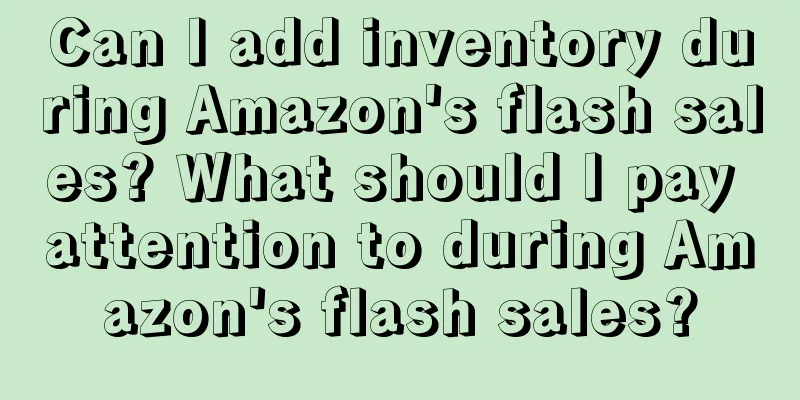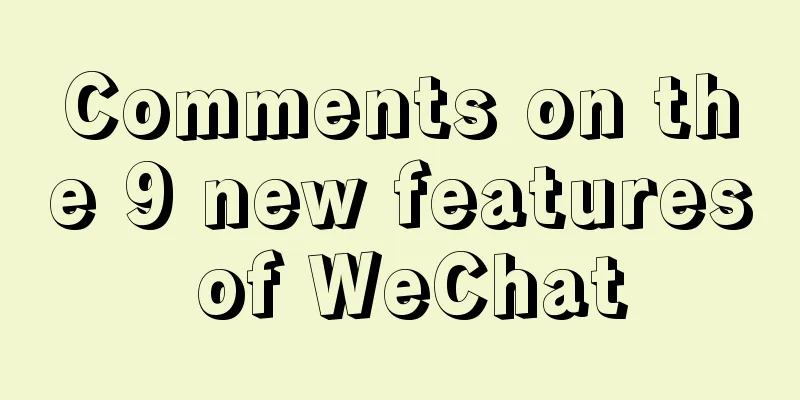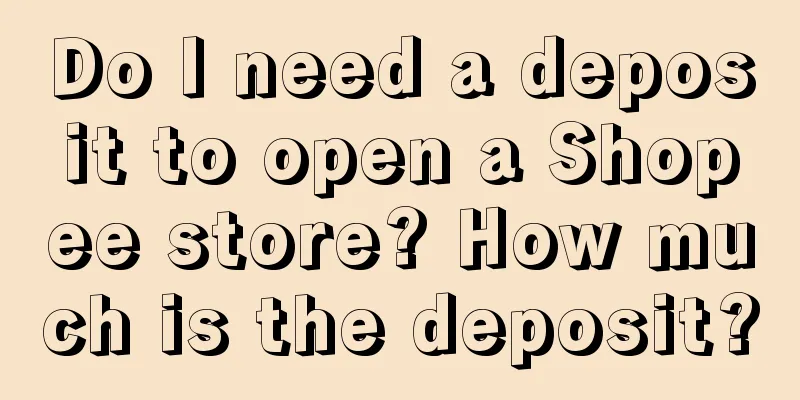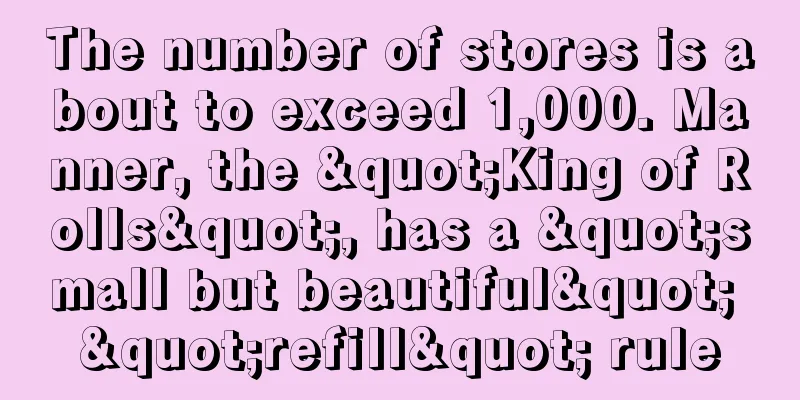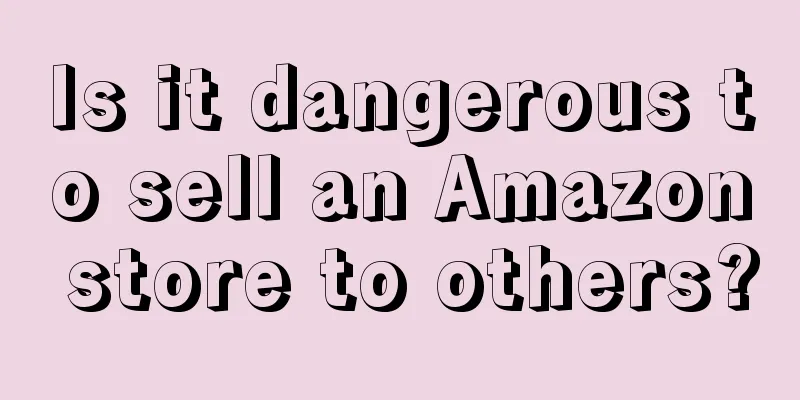PR enters the era of user operation
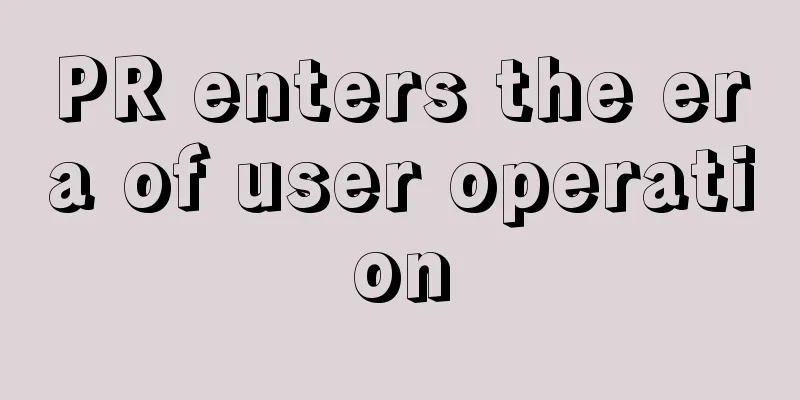
These two things have been popular on the Internet for a long time. First, there is the dispute between the two bosses of Wahaha Group and Nongfu Spring. From the early entrepreneurial stories, the disputes have now even dragged in all sorts of messy things such as Oriental leaves and water quality. Even more outrageous, someone photoshopped the bottle cap to look like the Japanese national emblem, and there was a lot of ridicule online about "cultural invasion", which made people laugh and cry. Another, news about ideal MAGA cars. Are all car companies so aggressive? Some netizens made fun of the exterior design of the car, saying that the rear end looks like a "coffin". A closer look reveals that the rear end designs of most MPVs are similar, but this time it caused unnecessary controversy. A friend said: Being responsible for brand public relations is becoming increasingly difficult. In the past, issuing a statement could calm the situation, but now it is completely ineffective. In serious cases, it will affect sales, stock prices, and even the company's overall image. I have also been in charge of the public relations department and know some of the operations of traditional public relations. In the past, most topics revolved around brands and KOLs. At that time, users were just spectators. It is still the same now. However, if you say something clever, it may influence a large number of people, and the likes and comments will become the new center of discussion. The media accelerates the development of public opinion, and anyone can become a voice for public opinion; yes, the public voice has changed, public relations has changed, so brands have entered the cyclical public relations (Cyclic Public Relations). 01What does circular PR mean? Let me tell you a story first: In 1946, American doctor and statistician Joseph Berkson discovered an interesting phenomenon in his research. In the hospital, people with diabetes seem to rarely suffer from cholecystitis, while many people without diabetes suffer from cholecystitis. At first glance, you would think that people with diabetes can avoid cholecystitis to some extent, right? But the conclusion is obviously wrong. Berkson pointed out that the reason behind this phenomenon is that there is a bias in the selection of statistical samples, which only focuses on those patients who are hospitalized and ignores the large number of people who are not hospitalized. Therefore, we would mistakenly believe that there is some relationship between the two variables. Simply put, when different people enter the research sample, the probability of occurrence is different, and two originally unrelated events will also have a certain relationship. Later, people called this phenomenon Berkson's paradox. You might ask, what does this have to do with circular PR? Imagine that the snacks and drinks you buy are always labeled with words like low sugar, low fat, and no additives. Brands want to establish a connection between "0 sugar, 0 fat" and "healthier" and will simply attribute the communication. Did you know that this statistic only counts a small number of people who have tested the product, completely ignoring those who have not purchased it? In the past, people discussed the Berkson paradox, but now everyone can express their opinions on simplified information through media platforms. Then, when a certain phenomenon appears, other deviations will be revealed one after another. for example: People in the PR circle said, "This statement is cold and unprofessional." Consumers said, "I felt it was wrong when I used it before, etc. In addition to visible information, there is also a hidden competition between brands. In this way, various actions are mixed together like stones thrown into a lake, stirring up whirlpools one after another, and opinions and facts become blurred. When negative content in public opinion exceeds positive voices, a new public opinion will emerge. This is the actual situation of the crisis cycle. At present, it is no longer possible to respond to all users' doubts about the facts with just a serious public relations statement. Therefore, circular PR means that information dissemination and public opinion management are continuous cycles; the interaction between the brand and the public and information dissemination occur continuously, and every word of the consumer will trigger new attention, forming a continuously circulating chain. 02Do you know which issues are most worthy of attention in cyclical crisis public relations? The first response to the facts? The user's doubt? None. What is at the top is the key information that has not appeared behind the long tail. What does it mean? You may have heard of Survivorship Bias. To make it easier to understand, let me remind you of a story from World War II. The leader of the Allied forces wanted to find out where the fighter planes were hit most by the enemy, so that he could reinforce that position to prevent the enemy from attacking again. So he checked all the planes that flew back and found that there were a lot of bullet holes in the wings, so he planned to reinforce the wings. At this point the statistician stepped up and said, wait a minute, you forgot to consider the planes that were shot down. What he meant was: if a plane can come back, it means that the parts that were hit are not that fragile. The truly fragile parts are the parts that are almost invisible, such as the fuel tank, cockpit, tail... The same applies to crisis public relations. Most brands think that if they respond, the crisis will be over; if a KOL stands up to guide public opinion, the problem will be solved, and consumer complaints will disappear. But do you know that consumer complaints are the biggest hidden danger, and brands often underestimate their power. Why? On the one hand, even a fool knows that the bigger the public opinion and the bigger the topic, the easier it is to fail, right? Therefore, brands generally use controlled public relations to make negative news disappear quickly. Generally speaking, if a company has sufficient budget, it will use a large number of media outlets to control the information it wants to convey. The problem with this approach is that companies are not willing to spend time digging deep into the real reasons behind public opinion, let alone develop persuasive strategies based on the truth. Controlled public relations only creates a climate of public opinion and provides a kind of emotional comfort to company executives to help them stay on their feet, but it cannot change the actual actions of purchasing decisions, such as enhancing brand trust and promoting product sales. Not to mention the companies without money, they have to continue their business by presenting facts and reasoning in the traditional way. On the other hand, consumers’ discussions are hierarchical. Different people will express a negative topic in different ways, causing different reactions. Many times, we only pay attention to the data (the most active and direct people), but ignore the silent people. The fact that these silent people didn’t directly criticize the brand in the comment section doesn’t mean they have no opinions. If they were in another place, these people would become outspoken. Imagine a scenario: In one class, the teacher heard a few students in the front row actively answering questions, so he thought the whole class had mastered the course content. But in fact, the students sitting in the back row may have many unanswered questions, they just haven't expressed them. On the contrary, the questions raised by these students who actively speak may be superficial. Similarly, when dealing with a crisis, if a brand only pays attention to consumers who directly express their opinions, it will ignore the silent majority, who are the actual purchasers, or who may be unable or unwilling to speak publicly for some reason. Take Ideal Auto for example: Most people who can afford 500,000 yuan to buy an MPV will not curse on their own media. They have bosses and executives. They care about their personal image and are more concerned about when the brand can transform unfavorable discussions into a "noble and elegant image" rather than suing a few rumor mongers. Potential buyers are more concerned about how the brand responds to reviews elegantly; as for the comments that the rear of the car looks like a "coffin", it is not the real core concern. So, the real challenge is for brands to understand and respond to dissatisfaction that is not expressed directly, and to be able to appease consumers who have already purchased. So there are two key points. First, when brands see direct negativity, they think that responding will solve everything, which in turn falls into survivor bias. After all, people only see the results of a certain screening process, and are not aware of the information of the screening process, thus ignoring the key information that has been screened out, and the ignored information happens to come from the "silent crowd." Second, the brand responded to the facts, although direct but very basic, and did not really touch on the main demands of the core consumers. 03Where can we find user demands? Most people would say: data. But do you know that in crisis management, data and invisible demands cannot be equated? Why do you say that? Everyone thinks that data can explain everything. You can look at the data to see user activity and topic volume. With data, you can know what users are talking about. Have you ever thought about where the data comes from? In my experience, generally speaking, third-party public opinion companies will provide employers with information about the volume of discussion on a certain event topic, the ratio of good to bad, the opinions of core influencers, and the trends of topics that are about to develop. If the data is not manipulated, then third-party public opinion companies can indeed be of great help. It’s really different now. Although technology seems to have advanced, there are still a large number of robot accounts on some short video platforms and graphic platforms that post comments like real people. It is very easy to fake things. Sometimes, when you click on a comment, there is not even a nickname or avatar. Another point is that if a self-media blogger posts the same sentence on different platforms, it will be recorded as several pieces of information in the public opinion report. In theory, duplicate content should be merged, but in reality it cannot be done because the data of various social platforms cannot be integrated. Furthermore, mistakes can be made when evaluating the influence of influencers. In order to appear more popular, some influencers will increase the number of likes and comments on an article (under short content) to create a false buzz, which makes it easier for us to misjudge the source of public opinion and the opposite direction of public opinion development. You may say that false prosperity is also prosperity, after all, the information displayed is always for the users who pay attention. That is wrong. The story of "stealing the bell while covering one's ears" tells us that making noise to cover up the truth does not change the facts. Moreover, the essence of the illusion of false prosperity is a kind of emptiness beneath the surface. Even if it seems that information is consumed in large quantities, in fact, it has not achieved the cognitive transmission to the consumer population. Not to mention video surveillance. I asked the boss of a public opinion company, and he said: If you want to track video content playback data, it will cost hundreds of millions a year; and the video platform is very strict about content capture, so it is almost impossible to cover the entire platform. Not to mention, many PR companies now give strategies that are based on what topics are popular on social media and then follow their lead. However, these hot topics may not necessarily accurately reflect the thoughts of “key consumers”. Because hot searches are easily manipulated. On the one hand, for money, some organizations will use means to influence rankings. On the other hand, platforms will manipulate hot searches for various reasons. Therefore, it is difficult to provide effective supporting evidence for public relations by relying solely on data. Do you think these are the only points? No. On social media, people like dramatic stories with big twists and turns. The more twists and turns, the more satisfied they are. In many cases, when public opinion companies analyze user "cognition", they are just guessing what people thought in the past. I specifically checked and found that after the Wahaha incident, there was a lot of discussion about the design of Oriental Leaves, a brand under Nongfu Spring. for example: The most controversial "pagoda and temple" architectural pattern. Some netizens questioned the sudden influence of Japanese architectural style, because China and Japan have a complicated relationship in history and culture. You see, users think what they want, and emotions are more powerful than facts. Users are unlikely to change their minds because of some information or facts, but if a certain melon appears again or the picture is particularly attractive, they may buy it. Of course, there are some key figures who have independent views. They prefer to listen to the opinions of those who they think "understand them better and have consumed their products", and these people are hidden in their circle of friends and communities. Did you know that large social media platforms are no longer neutral? Algorithmic recommendations and platform rules can help influencers you want to support to rise to the top. In the special support groups of some platforms, I often see plans to give traffic to those who participate in a certain public opinion. The big Vs who seem to be very influential may not be the opinion leaders that consumer decision makers truly recognize. Therefore, simply relying on data and public opinion monitoring reports to handle public relations crises can easily make brands fall into the illusion that we really understand the "key consumers", which is survivor bias. 04So, how can we understand key consumers more deeply and comprehensively and avoid brands from repeatedly being caught up in the vortex of negative topics? 1. Transformation from public relations role to user operationDo you remember the definition of circular PR? From one-way communication to two-way communication. The question is how to achieve two-way communication? Let's take a look at the difference between the thinking of a PR manager and the thinking of an operations manager. As far as the current market is concerned, public relations operators mainly focus on how to respond to and appease public emotions. They are naturally interested in volume and positive and negative feedback. Those in charge of operations are more concerned with a wide range of samples and will conduct in-depth analysis of the cognitive motivations behind user behavior. A content operations manager whose goal is to achieve cognitive conversion will not only focus on numbers like clicks and likes, but will also dig deeper into the thoughts and motivations behind users. They will analyze who the key consumers are, why they pay attention to this topic, where they come from, when they choose to speak out, what they say and do, what are the ideas behind it, and even who will influence them, what kind of content they will watch, etc. based on 5W1H (Who, Why, Where, When, What, How). In other words, content operations will focus on the dynamic changes in performance and cognition throughout the “user life cycle”. 2. From user operations to receiving feedbackKnowing this, you understand that simply issuing a statement will not solve the problem. The problem is that brands also know how to give a thoughtful response to critical and far-reaching issues. Public relations professionals have long imitated advertising marketing strategies and established cooperative relationships with KOLs or KOCs on social media; however, this imitation only stays on interactive data, such as likes and comments, but rarely conducts in-depth assessments of long-term or short-term changes in user perceptions. Did you know that when a negative issue comes out, after responding to the facts, there will still be a long tail of discussion. These discussions will sound the alarm for public relations work, reminding us that the beginning of negative may be random, but most of the negative public opinion will not break out until some time after the incident. The challenge for PR is to focus the discussion on a topic, create a peak of public opinion, and thus trigger more self-propagation. Therefore, there is a huge difference between a post with 100 replies and 100 posts with 1 reply each. Look at how the Hongxing Erke donation incident became popular in the long tail stage, or the White Elephant instant noodles incident, and you will find that leaving opportunities for reversal in the long tail stage is to plant the seeds in advance at the right time. The primary reason is "how people who buy the product and those who have bought the product view it. 3. From accepting feedback to providing appropriate guidanceEven with the factual response and the cooperation of pre-planting seeds, it is not enough. Brands need to provide a support point for those who smear, ridicule, and prefer to create memes, so that they can reverse the situation. Do you remember the cases where the logos of Heytea and Mixue Ice City were designed and smeared? Some netizens changed their profile pictures to black and white to mock the brands. If this happened in the public relations industry, they would definitely send a lawyer's letter to the netizens. However, the two brands are different. The official Weibo account quickly followed up, replaced the avatar with a user-Photoshopped photo, and generated content such as "Heytea got darker, Snow King got tanned when he went to the mulberry garden to pick mulberries", and also launched a photo-editing competition to encourage netizens to create boldly. In fact, this happens to turn the negative into brand popularity. So, we often say "crisis is an opportunity", but where is the turning point? After being dealt a bad hand, the company responded based on facts, morality, and values, absorbed all the complaints from users, provided a platform for them to have fun on, and finally formed a reversal. In this way, the emotional value was satisfied and sales conversion was achieved. In summary: Old thinking can't reach new places. Don’t be afraid of crises, don’t engage in confrontation, put aside your desire for self-protection, and think about what your core users really want. The shift from one-way response to user operations is a change in both technique and “Tao.” Isn’t it? Author: Wang Zhiyuan; Official account: Wang Zhiyuan |
<<: How to create an account for a new blogger on Xiaohongshu? 4 steps to operate an account
>>: Review of Zong Qinghou's marketing philosophy: no theory, only practicality
Recommend
What problems can “closed-loop thinking” solve in corporate marketing?
The article revolves around the four words "c...
New consumption goes to Japan, targeting young women
The author of this article analyzes the new consum...
Can a frozen Shopee Thailand store be unblocked? What is the reason?
Previously, many sellers of Shopee Thailand stores...
No matter how small the category is, you must first find the first place and not be the second.
Exploring how brands can break through in the 200 ...
My favorite method for selecting popular topics! It’s amazing.
In new media operations, topic selection is a cruc...
After a hot collaboration, Miniso has a hard time keeping up with the huge traffic?
The author of this article talks about the brand t...
Indicator movement analysis, the best strategy is here
Many times we see the fluctuations in indicators, ...
The four-step product selection method that ordinary people must learn to start an e-commerce business. I personally practiced and summarized the refined version
In this article, the author shares a product selec...
With so many people flocking to video accounts, how can car brands rely on “acquaintances” to operate?
In the wave of digital marketing, video accounts, ...
Label your brand and break the dilemma of homogeneity!
The pace of the times is accelerating, and brand o...
The emergence of brand concepts and ideas is the most significant conceptual revolution in business history.
If we compare a company to a "business machin...
How to view Amazon store traffic? How to increase organic traffic?
After opening a store on Amazon, merchants must le...
What are the operating characteristics of DHgate.com? What is its main business?
DHgate.com is a leading comprehensive e-commerce p...
Can video e-commerce get out of the black box?
In 2023, video accounts are constantly making effo...
Before joining Haidilao, did you know that it does not make money from products and services?
Haidilao has always been famous for its service at...
